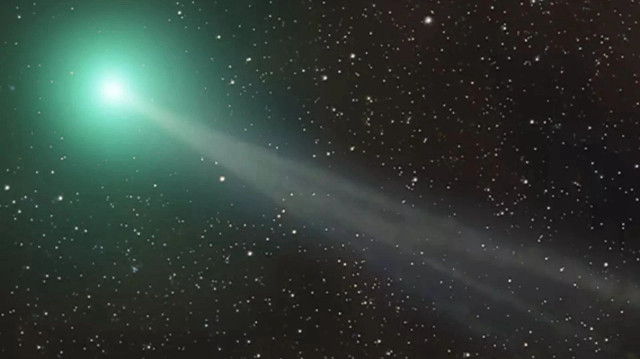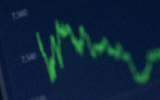
Comet G3 ATLAS passed its closest point to the Sun, may brighten enough to be visible to naked eye in coming days this week
A rare celestial spectacle could soon unfold as Comet 2024 G3 (ATLAS), which last appeared in the inner solar system 160,000 years ago, has passed its closest point to the Sun. However, various reports say its brightness may be visible in the western sky after sunset in the coming days.
The comet, discovered in Chile by NASA's Asteroid Terrestrial-impact Last Alert System (ATLAS) on April 5, 2024, may brighten enough to be visible to the naked eye in the coming days this week, with experts comparing its potential brilliance to that of Venus.
- When and where to look
The comet G3 ATLAS reached perihelion, or its closest point to the Sun, on Monday at 10:17 Universal Time. It came closer within 8.3 million miles (13.4 million kilometers) of the Sun, making it a "sun-skirting" comet.
Such a close pass increases the chances of visibility while also increasing the risk of disintegration, the BBC said in its report, citing Shyam Balaji, a researcher at King's College London.
"For observers in the Southern Hemisphere, the best viewing opportunities may occur in the days around perihelion, looking toward the eastern horizon before sunrise or the western horizon after sunset," said Balaji. He, however, emphasized that predictions about comet brightness are "notoriously uncertain."
Northern Hemisphere viewers, including those in the UK, may find it more challenging to spot the comet due to its proximity to the Sun. "Light pollution-free locations and binoculars or small telescopes can significantly improve chances of a sighting," advised Balaji.
- Rare visitor
Unlike many comets originating from the Oort Cloud that disintegrate during their first solar encounter, G3 ATLAS has likely survived at least one prior pass.
This gives astronomers hope for a bright display. In an email to Space.com, John Bortle, a respected comet observer, expressed cautious optimism despite signs of instability, such as a sudden brightness spike on Jan. 2.
"The apparent instability could suggest breaking up, but certain features observed near perihelion are classic for large, enduring comets," said Bortle, adding that the comet's survival chances are "about 50:50."
- 'Brightest comet of 2025 so far'
The comet's sudden jump in brightness has drawn global attention.
Speaking to Spaceweather.com, Nick James of the British Astronomical Association remarked, "It looks as if this outburst has not been fatal," signaling hope for its continued brightening.
NASA astronaut Don Pettit captured a stunning photograph of the comet from the International Space Station and shared it on social media Saturday, saying, "It is totally amazing to see a comet from orbit."
Bill Cooke told USA Today on Monday that the comet could be the brightest of 2025, but it is too early to say.
"I can tell you it's definitely the brightest comet of 2025 so far. Will it be the brightest comet we will see in 2025? No one knows… There are still 11 months to go," said Cooke, a lead of the National Aeronautics and Space Administration's Meteoroid Environment Office.
- Once-in-a-lifetime event for skywatchers
Despite the excitement, whether G3 ATLAS will be visible to the naked eye remains uncertain.
On Jan. 4, Daniel Green of the Central Bureau for Astronomical Telegrams issued an official caution stressing that while mathematical models predict potential brightness, long-period comets like this one are notoriously unpredictable.
Skywatchers are encouraged to keep an eye on local forecasts and prepare for the possibility of witnessing this once-in-a-lifetime event.
"The true wonder of comets lies in their unpredictability—they remind us of how dynamic and mysterious our universe truly is," Balaji summed up.
This celestial visitor promises to be a rare treat for astronomy enthusiasts, with its next appearance expected in another 160,000 years.
Hello, the comments you share on our site are a valuable resource for other users. Please respect other users and different opinions. Do not use rude, offensive, derogatory, or discriminatory language.
The floor is all yours.








